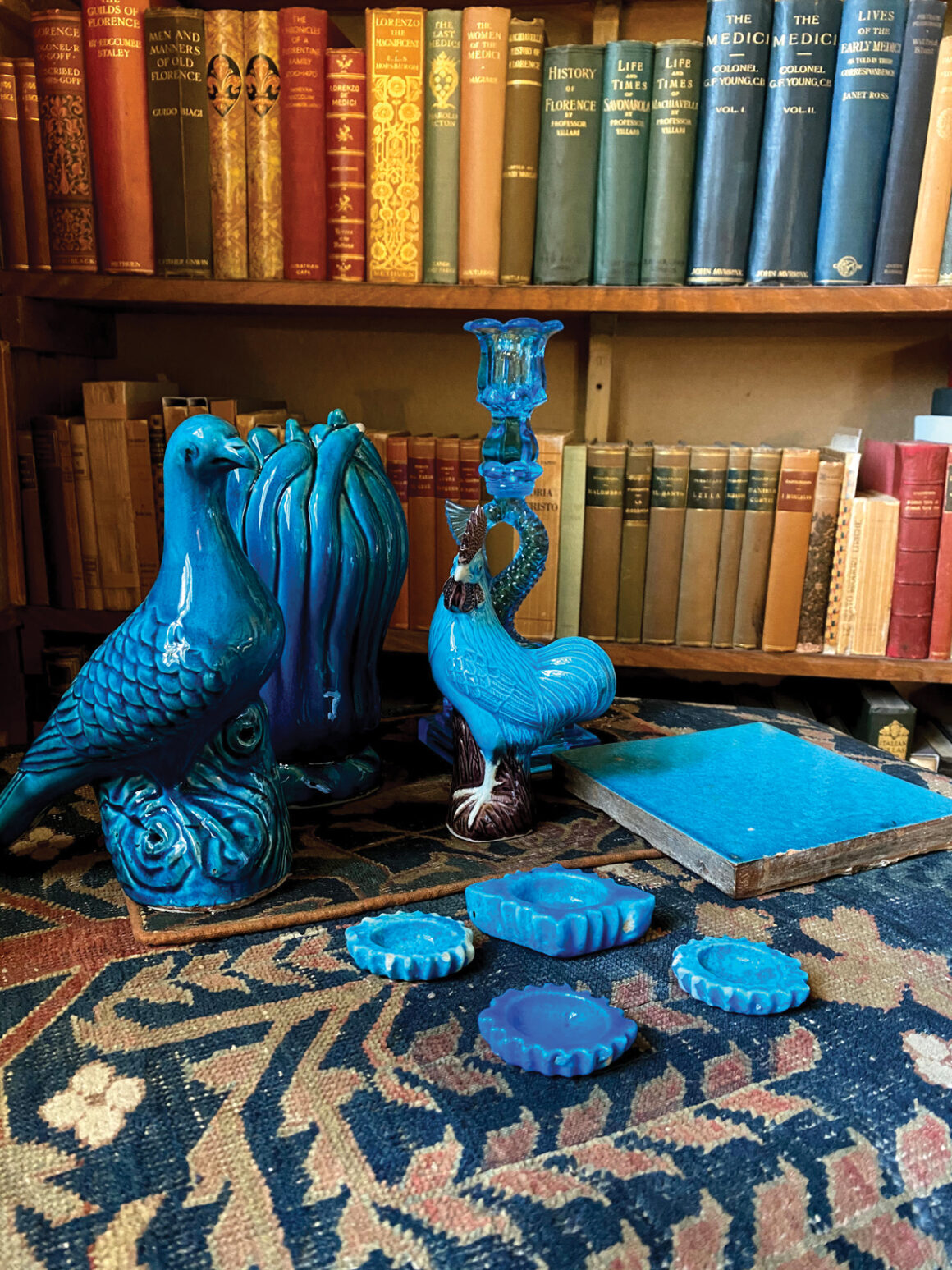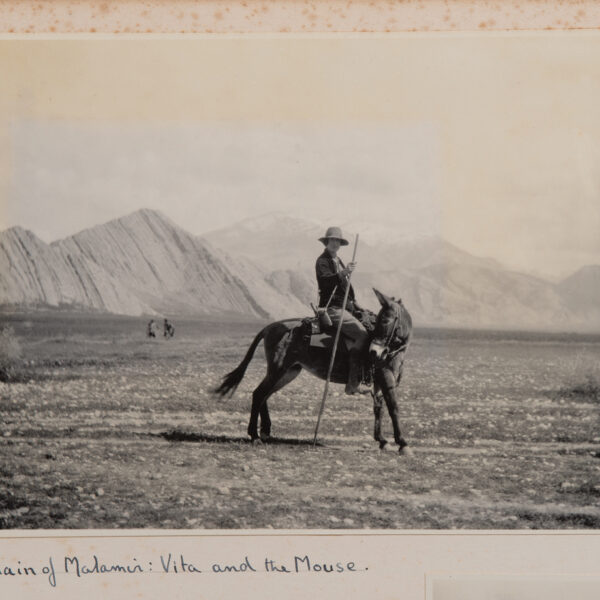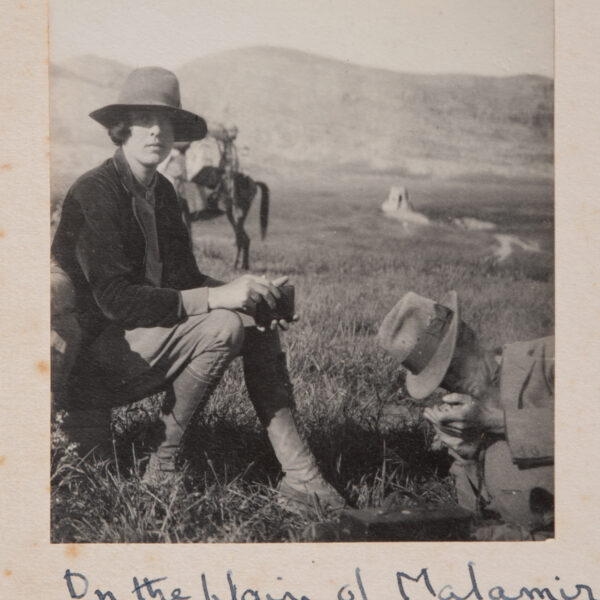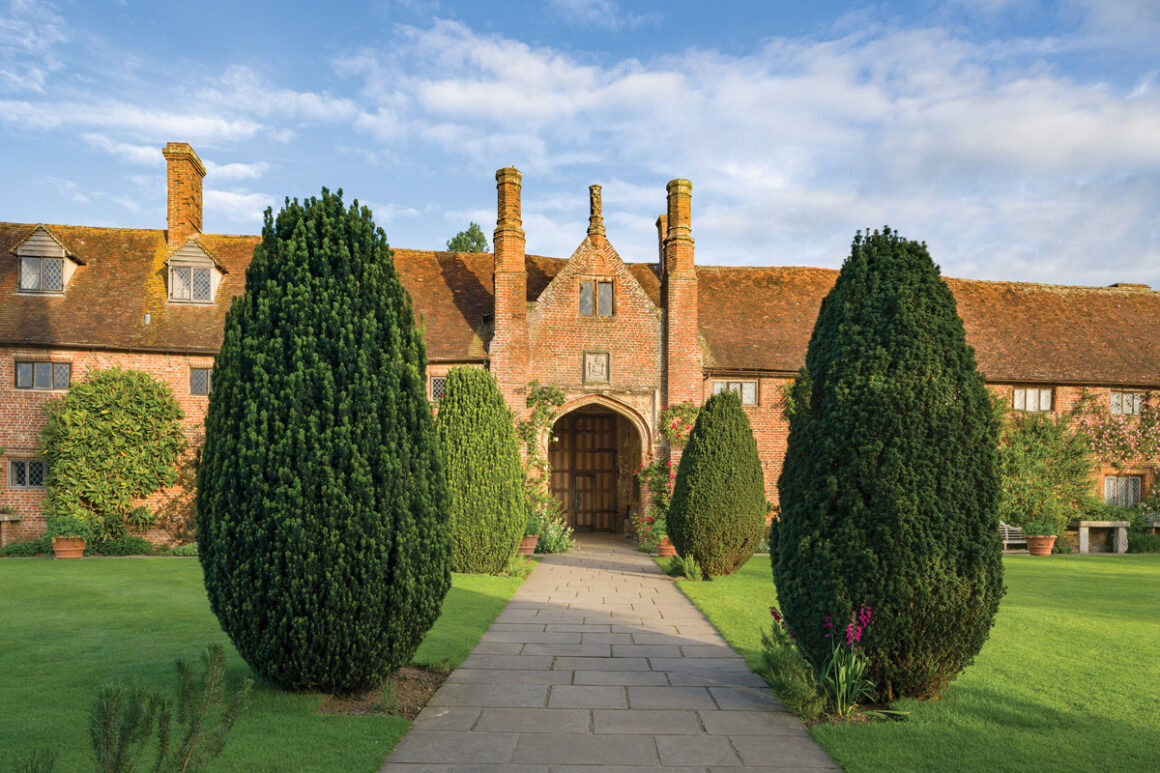A Persian Paradise: A new exhibition
The 1920s saw a revolution in European travel. Celebrated author Vita Sackville-West and her diplomat husband Harold Nicolson were two of the most high-profile cultural figures of their generation. They wrote vividly about their experiences in Persia in the mid-1920s, their responses channelling a growing fascination for all things ‘Persian’. Vita’s travelogues in particular offer glimpses into a time of change in Iran and the Middle East. Following Harold’s posting to Tehran from 1925 to 1927, ‘Persia’ officially became ‘Iran’ in foreign eyes; and a new ruler, Reza Shah, established a new monarchy and began to reframe Iran’s relationships with the world. Vita and Harold experienced the diplomatic lifestyle in Tehran at a time when Britain’s influence there was declining, leaving a difficult political legacy.
Following the arc of this two-year period, this new exhibition at Sissinghurst Castle Garden will trace the changes in global politics, the influence Persia had on Vita and Harold’s careers, their homes, their gardens and their relationships, as well as its wider cultural resonance.
Vita’s time in Persia inspired her to write two travel books: Passenger to Tehran and Twelve Days with the Bahktiari Tribe, both published by Virginia and Leonard Woolf’s Hogarth Press in 1926 and 1928. These are amongst her finest writings. Meanwhile Harold quickly became captivated by the beauty of Persia. “It seizes one by the throat,” he wrote. His arrival came at a critical moment in Persia’s history, and he had hoped that learning Persian would smooth negotiations with the country’s leaders. Together they took botanising trips, exploring Persia’s extraordinary natural landscape of mountains and vast plains.
Finding ruined gardens in Persia caused Vita to philosophise about the nature of ownership. She came across ruined gardens, “on the slopes of the Kuh‑e Sofeh, overlooking Isfahan” [Passenger to Tehran] in the Meshed Gap, or at the foot of the Elburz, with peach trees in blossom, “a tangle of briars and grey sage, and here and there a Judas tree in full flower”. Despite being a very private person, Persia taught Vita how to enjoy sharing her garden with her readers and the visitors to her own garden.
In her poetic work and through her creative regenerations of her homes, Vita drew great inspiration from encounters with ruins. Her Persian travelogues were a place where she developed her ideas about the aesthetic relationship between ruins, landscape and cultivation. Her drive to find a more monumental ruin to restore followed both her loss to patrilineal inheritance of the ancestral pile of Knole, but also her scrutiny of structures amid the growth of two Persian springs.
Part of Reza Shah Pahlavi’s programme of national regeneration included a renewed drive to restore and reconstruct its key monuments. In a small way, Vita and Harold’s drive to rebuild Sissinghurst Castle Garden in the 1930s paralleled this sense of rebuilding an historical identity in a significant place.
The exhibition will feature key highlights of Sissinghurst Castle’s collection including archaeologically significant photographs and specimens, correspondences, glass, ceramics and other objects. Through the interplay of objects and memories – the worlds and strands of Vita and Harold’s writing rooms – the exhibition will explore the interweaving of this Persian experience with the creation of their own home and garden spaces. Whilst they both had emotionally-significant same-sex partners throughout this period, nevertheless their time in Persia cemented their deep love for one another.
A Persian Paradise runs daily from Saturday 14 October 2023 until Sunday 24 March 2024, excl. 24 and 25 December.
This exhibition has been generously co-sponsored by The British Institute of Persian Studies.



